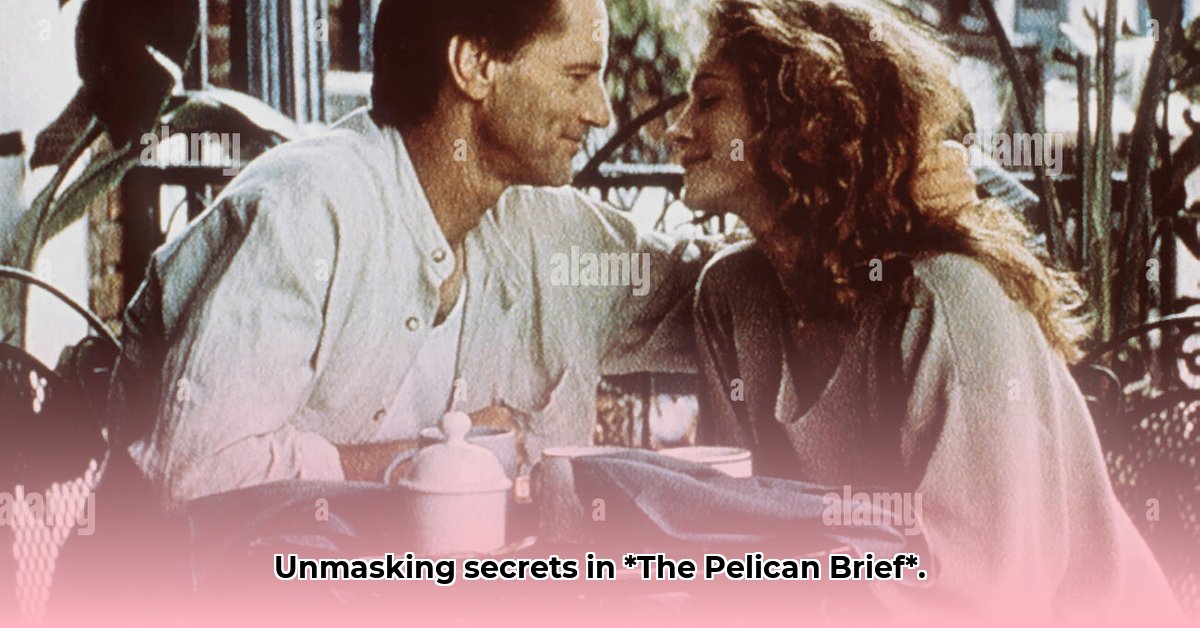
A Grisham Adaptation, But Is It Pakula?
Alan J. Pakula, the maestro behind All the President's Men, took on John Grisham's The Pelican Brief in 1993, delivering a thriller with a familiar, shadowy atmosphere. This review isn't just about whether the film succeeds, but whether it truly captures the essence of Pakula’s masterful suspense. We'll unpack its strengths and weaknesses, comparing it to Pakula's earlier triumphs and exploring how effectively it utilises his signature visual style. Did it soar, or did it just… flap its wings weakly?
The film boasts moments of genuine brilliance. The car bomb sequence, for example, is a masterclass in tension-building. Pakula's expert camera work—those close-ups, those dramatic angles, the masterful play of light and shadow—keeps you on the edge of your seat. That characteristically high-angle shot? It's there, a subtle nod to his past work. But these stellar moments are unfortunately few and far between, leaving a lingering sense of unfulfilled potential.
The central problem lies in the narrative pacing. The film shrouds its central mystery for far too long, delaying the reveal of the protagonist's key theory until well into the story. This jarring structural choice undermines the emotional connection with the audience, a stark contrast to All the President's Men, where we're immediately invested in Woodward and Bernstein's journey. This delayed gratification feels more like a missed opportunity for sustained tension, leaving the audience emotionally detached until much later in the film. Doesn't it feel like dessert served before the main course, leaving you slightly unsatisfied?
Then there's the cinematography by Stephen Goldblatt. While some camera angles expertly generate suspense, the overall visual style feels disappointingly flat. The lighting is functional rather than stylish, lacking the visual richness synonymous with Pakula's best work. The film’s visual landscape doesn't leave a lasting impression—it fails to enhance the suspense and emotion. It's a missed chance to create something truly memorable, visually striking, a far cry from the visual excellence Pakula usually delivered.
Furthermore, the film’s release in 1993 coincided with a period of relative decline in Pakula's career trajectory. While perhaps superior to some of his later works, The Pelican Brief, even with its moments of thrilling tension, feels like a shadow of Pakula’s greatness. It’s a standard Grisham adaptation, a product of its time, ultimately lacking the unique stylistic flair and thematic depth that characterised his finest films.
In conclusion, The Pelican Brief presents a mixed bag. It showcases Pakula's ability to generate suspense, with moments of edge-of-your-seat tension. However, a flawed narrative structure and a visually underwhelming approach prevent it from reaching its full potential. While hints of Pakula’s signature style remain, the film fails to deliver the thematic punch and emotional resonance of his masterpieces. It's a thriller that sporadically thrills, ultimately leaving the audience wanting more—a tantalizing glimpse of what could have been, rather than a fully realised masterpiece.
Narrative Structure in Suspense Thrillers: Lessons from The Pelican Brief
Key Takeaways:
- The effectiveness of a suspense thriller hinges critically on its narrative structure.
- Narrative techniques such as unreliable narrators, dual timelines, fragmented storytelling, the Rashomon effect, and circular narratives are powerful tools to build suspense.
- Successful integration of these structures demands careful execution, aligning with overall thematic goals.
- The Pelican Brief, while successful in some aspects, highlights the importance of strategic information unveiling for maximum impact.
- Aspiring thriller writers must experiment with and understand narrative theory to craft truly compelling suspense.
This analysis draws on a study of narrative techniques in psychological thrillers, highlighting how these influence reader engagement and suspense levels. The study demonstrates the crucial role of narrative architecture in determining a thriller's overall success or failure. The principles discussed in the study illuminate why certain structural choices in The Pelican Brief succeed while others fall short.